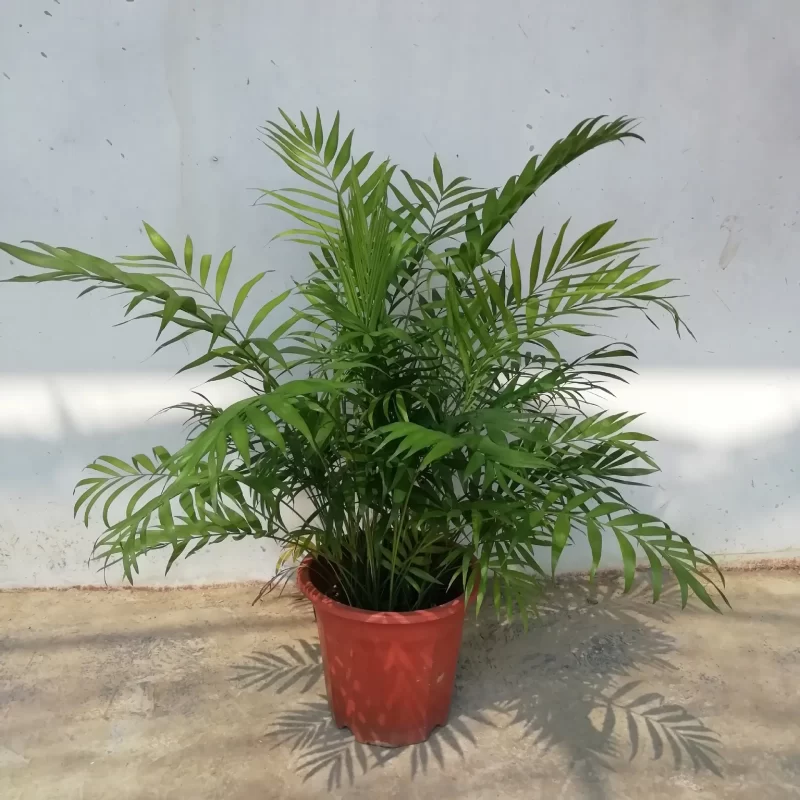
Pocket coconut (scientific name: Chamaedorea elegans Mart.) is a plant of the palm family and the genus Chamaedorea. A small evergreen shrub, the pot height generally does not exceed 1 meter. Its stem is upright, unbranched, dark green, with irregular patterns. The leaves are generally attached to the top of the branches and are pinnately split. It is 14-22 cm long and 2-3 cm wide. The bases of the top two pinnate leaves are often conjoined to form a fish-tail shape. The young leaves are green and the old leaves are dark green. The leaves are flat and the mature plants are like umbrellas. The spadix is axillary, the flowers are yellow, small and spherical, dioecious, the male inflorescence is slightly upright, the female inflorescence is slightly drooping when nutritional conditions are good, and the fruit is spherical and orange-yellow. Flowering in spring.
It is native to northern Mexico and Guatemala and is mainly found in tropical areas of Central America. Its nature likes high temperature, high humidity and semi-shady environment.
Pocket coconut is the smallest coconut plant. The plant shape is similar to a tropical coconut tree. It has a small and unique shape. When placed indoors, it presents a unique tropical style. It can also purify benzene, trichlorethylene and formaldehyde in the air, and It has a certain sterilization function and high transpiration efficiency, which is beneficial to increasing the concentration of negative ions in the room. It can also increase the humidity of the room, which is beneficial to people’s skin and appeal. Because pocket coconut can improve indoor air quality, it is called a “high-efficiency air purifier” in biology. It is very suitable to be placed on an indoor Youlite plant stand or in a newly renovated room.
